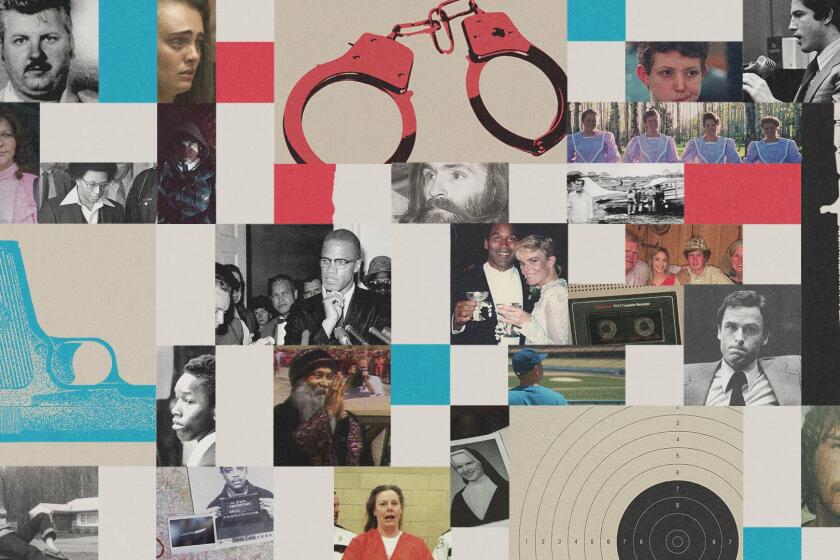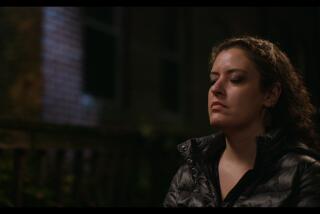HBO’s ‘Love Has Won’ shows how cult leader Amy Carlson went from McDonald’s manager to mummy
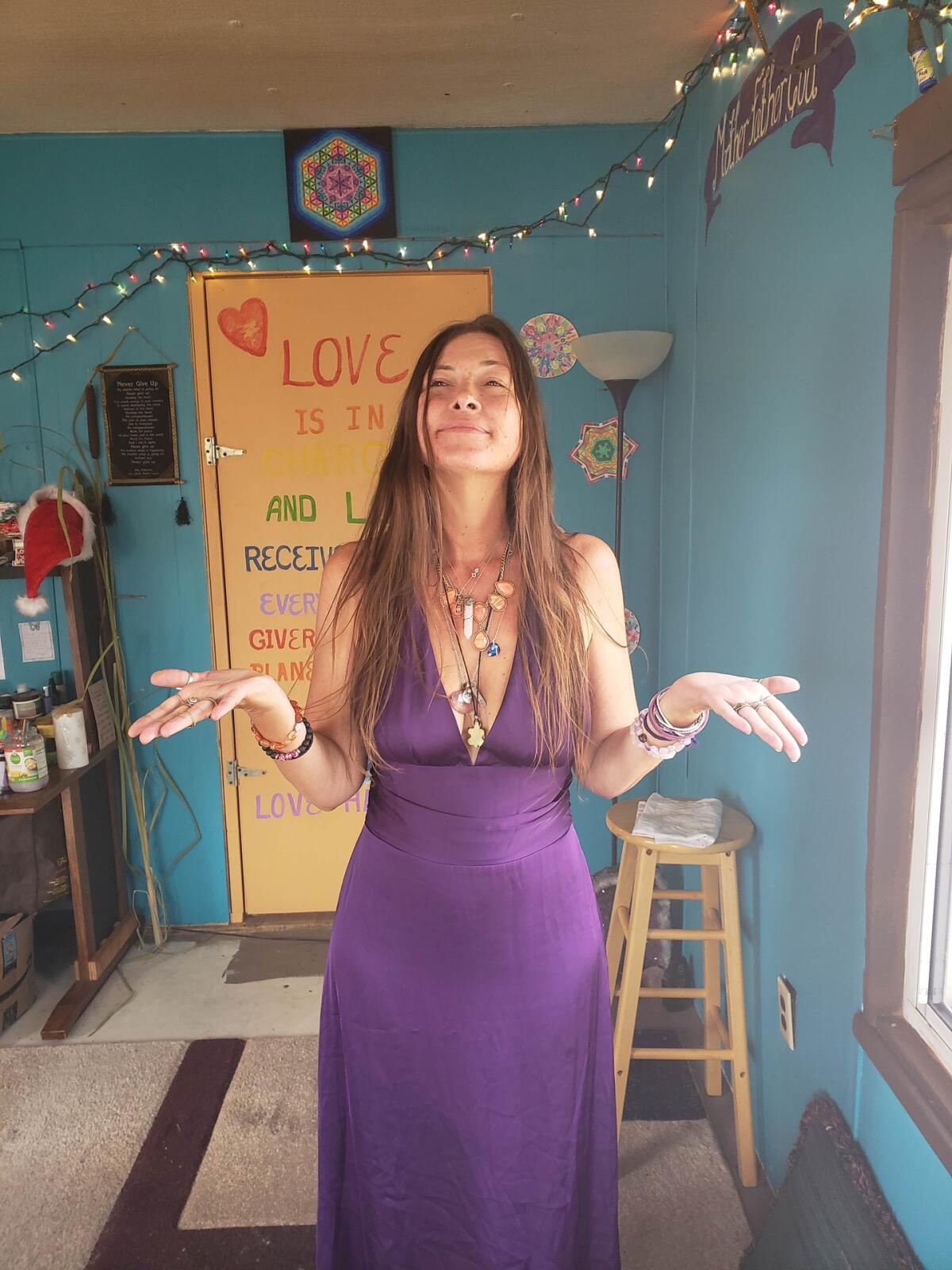
In April 2021, police discovered the mummified body of a woman named Amy Carlson wrapped in a sleeping bag and Christmas lights at a house near the tiny town of Crestone, Colo.
Better known to her followers as “Mother God,” Carlson led a small, cult-like group called Love Has Won that is now the focus of a documentary series on HBO, “Love Has Won: The Cult of Mother God.”
Beginning as a website and eventually moving into livestreams on YouTube, the group espoused a mish-mash of New Age spiritual beliefs and conspiracy theories such as QAnon, and also believed they were guided by the “Galactics,” an eclectic mix of (mostly dead) celebrities that included Steve Irwin, Robin Williams, Carrie Fisher and Donald Trump. They sold merchandise, preached the virtues of marijuana and alcohol as “medicine,” and peddled dubious products such as colloidal silver, which has grown in popularity as an alternative health remedy even though the Food and Drug Administration has warned it is unsafe and ineffective.
Directed by Hannah Olson (“Baby God,” “The Last Cruise”), the three-episode series chart’s Carlson’s strange journey from Kansas-born young mother of three and McDonald’s manager to self-proclaimed spiritual guru who claimed she was a divine being, the mother of all creation, and the reincarnation of Marilyn Monroe, Joan of Arc and hundreds of other historical luminaries. As the leader — or at least the public face — of a cult-like group, Carlson was in an unusual position for a woman, and cycled through numerous romantic partners who were temporarily given the title “Father God.”
The final episode, which aired Monday on HBO, depicts her utterly bizarre and painfully protracted demise. Believing that she was ailing because she had taken on the pain of the world and would be evacuated from the earth by the Galactics, Carlson lost more than 50 pounds and consumed little more than alcohol and colloidal silver, which turned her skin a disturbing purplish-gray color. After Carlson died — from what an autopsy revealed was organ failure related to anorexia, alcoholism and colloidal silver ingestion — her followers traveled across five states with her body in the back of an SUV.
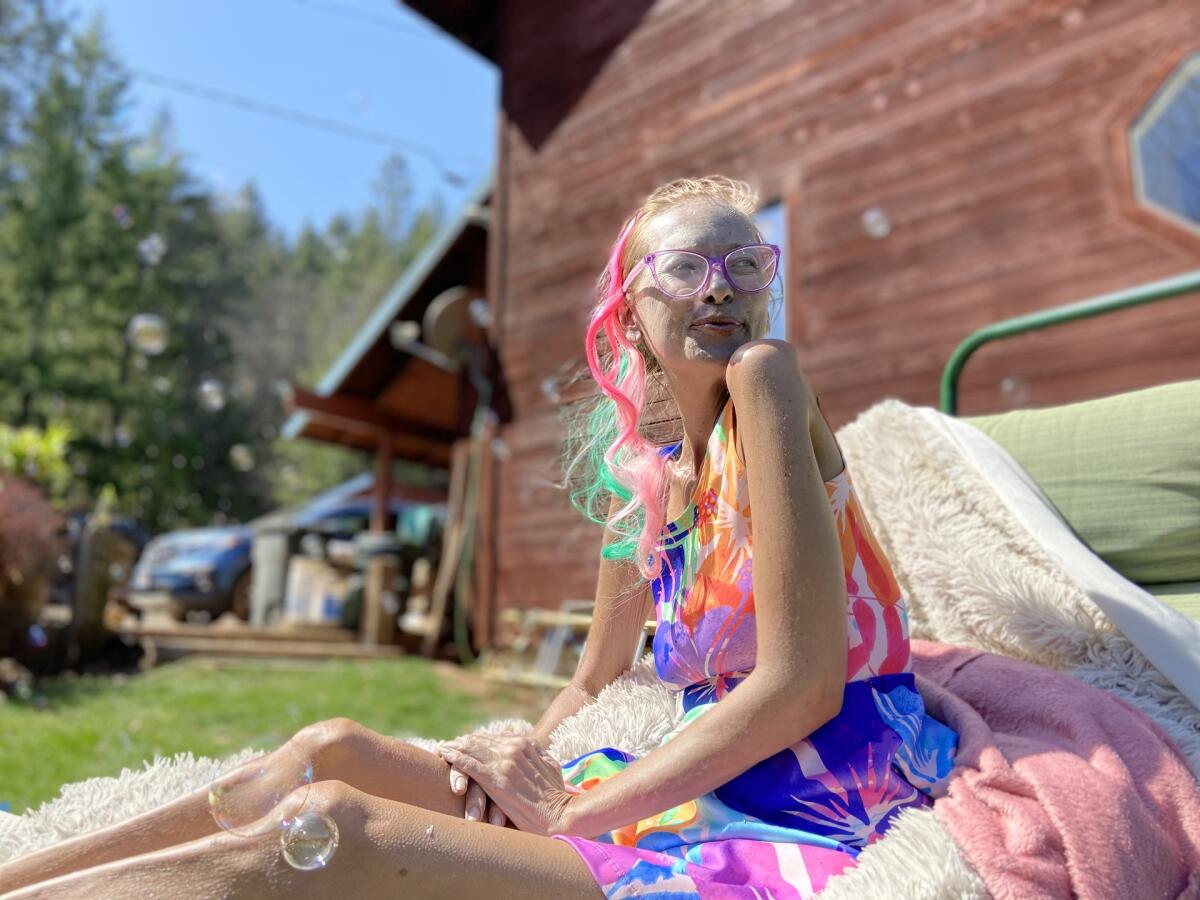
Olson traveled to Colorado shortly after Carlson’s death and spent several weeks with the members of Love Has Won, returning numerous times over the next year. She listened to Carlson’s devotees — including the final “Father God,” a former Blockbuster employee named Jason Castillo — who shared their perspective on the saga and opened up about what they saw in “Mom,” as they call her. Olson also spoke to Carlson’s estranged family members, including her mother and sister, who staged an unsuccessful intervention on “Dr. Phil.”
“Love Has Won” is the latest of many cult-themed documentaries to land on TV in recent months. But in a recent video chat, Olson said she was more interested in making a project about the internet and how it shapes our beliefs than the reductive categories applied by the content algorithm.
“I don’t even know if I feel like it’s a cult film,” she said. “It’s an American tragedy about disenchantment with the American dream and a search for a different reality, and the way that snake eats its own tail.”
The following conversation has been edited for length and clarity.
Why were you interested in this subject?
I was looking into Y2K and our relationship with the internet. After 2016, I started thinking about how the promise of the internet as an encyclopedia has become more of a choose your own adventure novel, and the way that the loss of consensus reality that we saw happen politically can also happen socially.
Looking at a cult with a female leader really interested me because most of the time when we look at cult stories, it’s the same yarn about a megalomaniac [male] who brings people to him, and then the cult implodes because of sex, power and money. This is a case where I genuinely could not tell who was steering the ship. Trying to figure that out really interested me and so did looking at this through the lens of the limits of female power.
The way that Amy believed that she could take on the pain of the world through her body and the cult saw her as a physical vessel for the pain of humanity felt so specifically female. It made me think about all of the art we see about women in pain, and the way that we in our kind of culture at large often worship women in pain.
TV critic and true-crime buff Lorraine Ali selects the 50 best true-crime documentaries you can stream on Netflix, HBO Max, Hulu, Prime Video and more.
Do you have a better sense of who was steering the ship now that you made this documentary?
There’s a human but also an American impulse that I connect with carceral thinking, where we look for one person to blame because it’s a clean narrative. I just don’t think that’s the case here. I think it was a real mixture of systemic things and then dynamics within the group.
I think Amy is someone who’d been running her whole life from an abusive childhood and the exhaustion of her unsustainable working-class life that didn’t provide any financial security. She was looking for a new reality. And then that new reality ended up being inescapable for her.
You spent a lot of time with Amy’s followers. How did you win them over?
I came to them with genuine empathy and curiosity about what they had been through. I didn’t judge them. I was the first “3D” person that they’d been in touch with for a long time.
I became very interested in the systemic, familial and social factors that led them to Love Has Won. These are all people who are just Googling how to get mental or physical healthcare and were looking to heal their minds or bodies online. The human need that brought them to Love Has Won is actually quite relatable and widespread.
Can you explain the distinction between 3D, which is how the group refers to people in the outside world, and 5D, which is how they see themselves?
3D is the matrix, it’s parking tickets and taxes. And 5D is a psychedelic reality in an ascended state. I was not able to achieve 5D. They said I was 4D because I kind of understood 5D while maintaining my 3D life.
Watching the documentary, I was struggling to understand if they had a coherent set of beliefs or unifying ideology. Did you ever get the sense that they did?
Love Has Won’s belief system is internet-generated. It’s not just that the internet makes it easier to find Amy’s beliefs. The internet is actually generating many of these beliefs. It’s conspirituality. It’s this particular blend of New Age thinking and conspiracy theories that both exist online. What those things have in common is the belief that the reality that we’re seeing is not so — that there’s something else happening behind the scenes. Conspirituality relies on this human desire to look for myth and magic in life, for a way to understand the circumstances of our material existence.
So her followers are united in their despair, rather than a coherent set of beliefs?
Completely. And I met them in that place. The beliefs — it was like taking someone’s Facebook feed and turning that into a religion. That’s how I felt about the celebrity aspect of it as well. I didn’t try to explain the celebrity aspect of it in the film because it made so much sense to me on an intuitive level. We don’t have gods and goddesses in contemporary American culture. We worship celebrities.
It’s a very eclectic mix of celebrities.
Patrick Swayze was in charge of pets.
Then what was Steve Irwin’s job?
He didn’t have a specific role.
But Robin Williams was in charge?
He was the right-hand man, yes. I think for latchkey kids of the ‘80s and ‘90s, celebrities filled in for the family members we wish we had. Who wouldn’t want an uncle or a father like Robin Williams?
I was interested in what feels like a conscious decision not to try to explain or contextualize Love Has Won using experts. Tell me about that choice.
My storytelling rule is you don’t really get to talk about it unless you were there. It’s subjective storytelling. I wasn’t interested in telling it in a retrospective way. By excluding experts, my hope was that the film could also be about the nature of belief itself.
Some viewers might want that kind of hand-holding or an expert. But I was much more interested in an experiment in empathy than I was in a diagnostic or prescriptive take. There’s plenty of that out there. On the left, it’s very easy to look at people whose beliefs are very different from ours, and often violent, bigoted or dangerous, and to write them off rather than looking at some of the social systems that created the circumstances for those beliefs.
Many of Q’s story lines, including evil lizard aliens and a cabal of pedophiles, are pulled from films and television shows. Screenwriters are not happy.
Trump is one of the Galactics and the group is into QAnon. But it’s impossible to identify them according to traditional right-left politics.
For a lot of the people in the group, it was a material upgrade, living communally. Sometimes I would say, “Have you heard of Bernie Sanders?” I think the cult has dangerous reprehensible views. It’s a weird mix of left and right — between the New Age spirituality and dangerous conspiracy theories.
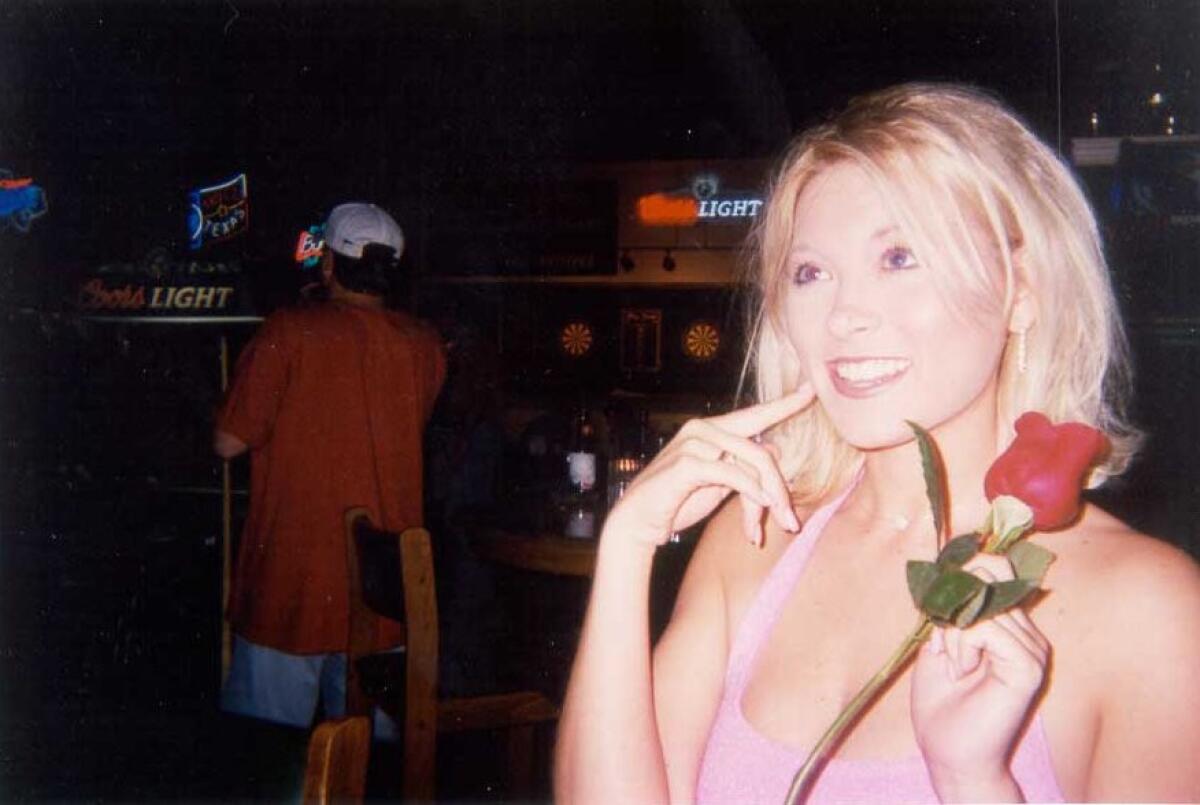
You use a lot of footage, including clips from the group’s livestreams and cellphone videos — some of them shocking. What was your process for gathering all of that?
The group was very transparent with me, because they wanted to share their story. As you saw in Episode 1, Amy really wanted to show people what it was like to live in 5D. I think in some ways they saw the sharing of this material as an extension of the group’s mission.
There were 2,700 videos on YouTube, so it was a lot of looking through that material to find the moments that stood out.
Basically, I sat everyone in the group down and had them tell me what happened. How did this woman, Amy Carlson, go from being a McDonald’s manager to a mummy? I interviewed everyone in the group and then I found the moments where what I was seeing in the archive in these 2,700 videos lined up with something they were saying. And then I was able to bring the viewer into that reality through the meeting of those two things.
The last episode includes some very disturbing footage of Amy’s final days in a hotel and after she died. It is some of the strangest stuff I’ve ever seen. How did you decide what to include?
I have hundreds of photos and probably 10 hours of footage from that hotel room. I basically went through every shot with my editors and asked if it was important for story purposes and ended up whittling it down to what I felt was only absolutely necessary, and what I felt comfortable showing Amy’s mother, sister and daughter. That was my metric.
Have they seen the series and how did they react?
It was hard but also powerful to watch with them. I was very happy that they felt like I told them the truth, and that they felt like I was honest to Amy’s experience. My way of thinking about the film was that everyone gets to tell their truth. And some of those truths may look really different and in juxtaposing those different perspectives on what really happened, something close to the truth might emerge.
It’s interesting that their family also went to a celebrity, Dr. Phil, for help.
They went to a celebrity, but they also didn’t go to a medical doctor. Neither group had access to the medical establishment. Amy’s family went to Dr. Phil, the cult went to colloidal silver and all kinds of spiritual remedies that they found online, but neither group had access to mental healthcare for Amy.
Did you understand why Amy seemed to have so much influence and what her particular charisma was as a leader?
She was a good manager. She also knew how to call out people’s fault and [how to] play people off each other. But as Andrew says in Episode 1, he was the internet guy. Miguel handled the bank accounts and Amy was the star of the show. In some ways, it’s like, was she the leader, or was she the talent? It’s not entirely clear. As I examined the footage and the financial records of the group, I came to see Miguel as a kind of producer. I’m always very focused on the material circumstances of things, like whose name is on the bank account.
You check in with several members of the group a year after Amy’s death and it seems like they are still believers.
I’ve since watched [the series] with the group. I think that the process of watching the film has caused some of the members to reflect differently on some of their choices. One of the members said that the documentary gave her an opportunity to see Amy — or “Mom,” rather — as a human being.
Because they didn’t know her whole story?
That’s right. Or they knew her story through the lens of her deification. They’re very much still online and espousing this mix of New Age spirituality and conspiracy theories, both of which are extremely common on social media. But without Amy as a deity, they look very much like millions of other people online.
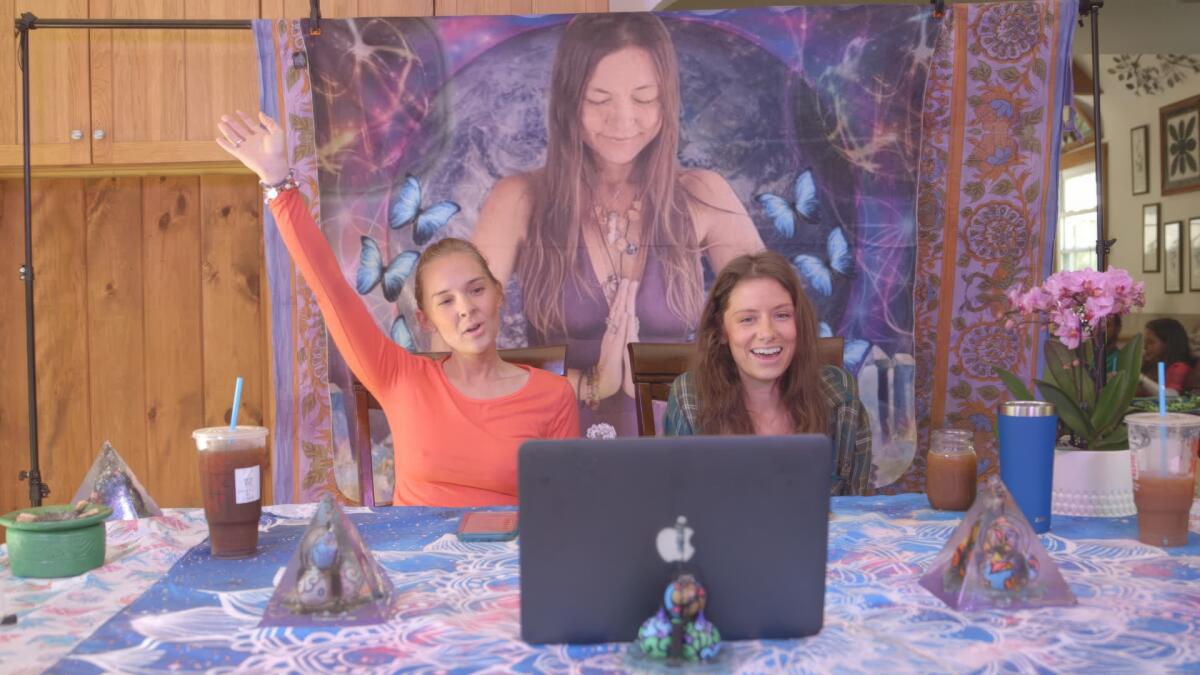
It seems like there’s been a real boom in cult content these days — podcasts, documentaries, etc. I wonder if you have thoughts about why there is so much of this out there?
We don’t have a lot of answers right now, politically or spiritually or environmentally. We don’t have mental healthcare in this country. The internet has allowed very subjective realities to transpire. [While making the series] I filmed a lot of people on their [social media] feed. Once you start to watch someone on their feed, you see how the algorithm creates and reinforces an alternate reality, because it spits more content that reinforces whatever worldview the algorithm perceives that you have. The algorithm fast-tracks you to an alternate reality.
In the elite liberal bubble, there’s a language that exists around trauma that is not widespread. Something I really learned from making this film is that a lot of people have been through financial, emotional, sexual trauma, and didn’t have the resources or language to cope with those things. They were really hungry for a way to cope.
Are you tempted to make something very lighthearted after this project?
I’m going to. But also, [I found] light and empathy within this. I grew to really care for many of the people who were wrapped up in this. I do think we’re all one trauma away from making choices that were previously unimaginable to us. Like Sarah, the woman who said she had $500,000 of medical debt and reality was no longer tenable. I think that we’re reluctant to look at the circumstances that push people down the wormhole.
As a documentary filmmaker, I find that giving someone a chance to tell their story is actually very meaningful. I had to make really careful choices about not to platform some of their more dangerous beliefs, but also holding space for empathy. It’s easy to write people off. It’s much more interesting to look at the social factors that underpin all of this.
More to Read
The complete guide to home viewing
Get Screen Gab for everything about the TV shows and streaming movies everyone’s talking about.
You may occasionally receive promotional content from the Los Angeles Times.
